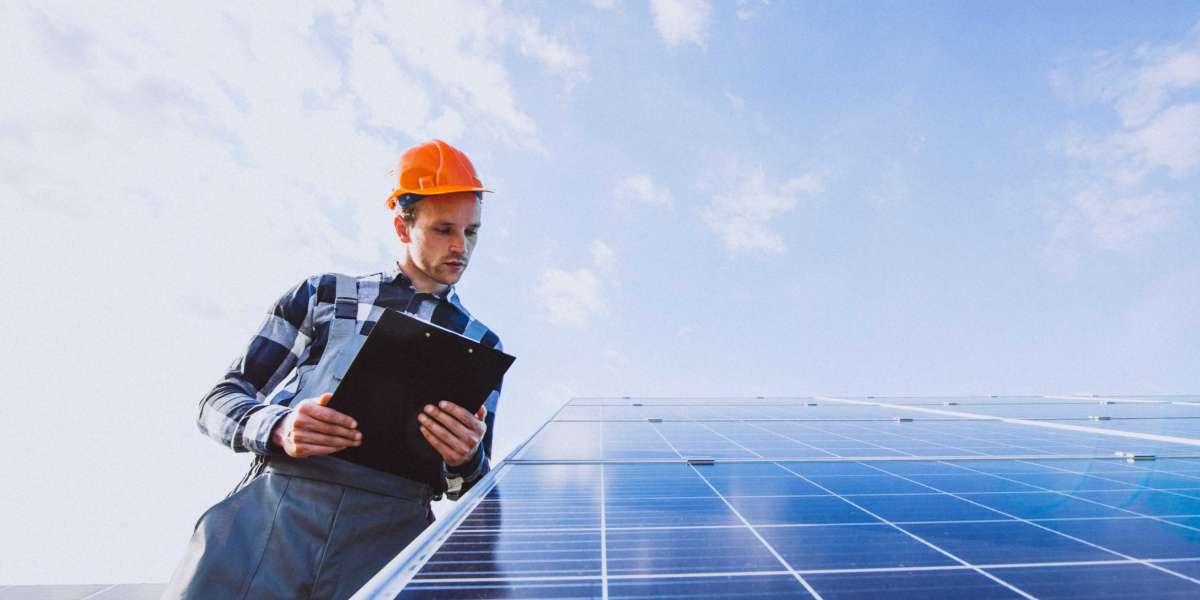As businesses in Pakistan increasingly seek ways to manage rising energy costs and embrace sustainable practices, commercial solar systems offer an effective solution. Installing a commercial solar system in Pakistan involves a series of well-defined steps, ensuring that the system meets operational needs and provides long-term benefits. This comprehensive guide details the process of commercial solar system in Pakistan, from initial assessment to system maintenance.
1. Initial Consultation and Energy Assessment
Understanding Business Needs
The initial phase of installing a commercial solar system in Pakistan begins with a consultation to understand the specific energy needs of your business. This involves evaluating your current energy consumption, peak usage times, and future energy demands. Accurate assessment ensures that the designed solar system aligns with your business's energy requirements and goals.
Site Survey
A thorough site survey is conducted to determine the feasibility of installing a solar system at your commercial property. Key factors assessed include:
- Sunlight Exposure: Evaluating the amount of direct sunlight the site receives, which impacts system efficiency.
- Roof Space: Determining the available space for mounting solar panels, including structural integrity.
- Shading Analysis: Identifying potential shading from nearby buildings or trees that could affect panel performance.
2. Feasibility Study and System Design
Feasibility Study
Following the site survey, a detailed feasibility study is carried out to evaluate the viability of a commercial solar system in Pakistan. This study includes:
- Financial Analysis: Estimating the cost of installation, potential savings, and return on investment (ROI). It also considers financing options and available incentives.
- Technical Assessment: Analyzing the technical aspects, including system capacity, equipment requirements, and integration with existing electrical systems.
- Regulatory Compliance: Reviewing local regulations and permits required for installation to ensure compliance.
System Design
Once feasibility is confirmed, a customized system design is developed. This includes:
- Panel Selection: Choosing the appropriate type and number of solar panels based on efficiency, durability, and cost.
- Inverter and Battery Selection: Selecting inverters to convert DC power into AC power and batteries for energy storage if needed.
- System Layout: Designing the layout for panel placement, taking into account optimal angles and orientation to maximize sunlight exposure.
3. Proposal and Cost Estimation
Detailed Proposal
A comprehensive proposal is prepared, detailing the design and financial aspects of the commercial solar system in Pakistan. This document includes:
- Cost Breakdown: Itemized costs for equipment, installation, and additional services. It helps businesses understand the financial investment required.
- Savings and ROI: Projected savings on energy bills, payback period, and overall return on investment. This information helps in assessing the financial benefits of the system.
- System Specifications: Detailed technical specifications of the proposed system, including equipment types and performance metrics.
Approval and Agreement
Upon reviewing the proposal, businesses must provide approval to proceed. This involves:
- Agreement Signing: Formalizing the agreement with the solar provider, including terms and conditions.
- Deposit Payment: Making an initial deposit to commence the installation process.
4. Permits and Approvals
Regulatory Permits
Before installation begins, obtaining the necessary permits is essential. This involves:
- Local Authority Approvals: Ensuring the installation complies with local building codes and regulations.
- Environmental Clearances: Securing any required environmental permits, especially if the installation involves significant modifications to the property.
Utility Company Approvals
For grid-tied systems, approval from the local utility company is required. This includes:
- Technical Specifications Submission: Providing details about the solar system design and capacity.
- Grid Compliance: Ensuring the system meets safety and performance standards for grid integration.
5. Installation of the Solar System
Site Preparation
Preparation of the installation site is a crucial step. This includes:
- Structural Assessment: Ensuring that the roof or ground mounts are structurally sound to support the solar panels.
- Equipment Setup: Gathering necessary tools and materials for installation.
Panel and Inverter Installation
The installation process involves several key tasks:
- Mounting Panels: Securing solar panels on the roof or ground mounts. Proper alignment and secure mounting are essential for optimal performance.
- Installing Inverters: Setting up inverters to convert the generated DC power into AC power suitable for business use.
- Battery Installation: If applicable, installing and connecting batteries for energy storage.
Wiring and Electrical Connections
Proper wiring and electrical connections are critical for system functionality. This involves:
- Panel Connections: Linking solar panels to inverters and batteries.
- Integration with Electrical System: Connecting the solar system to the existing electrical infrastructure of the business.
6. Testing and Commissioning
System Testing
Before the system is fully operational, it undergoes rigorous testing to ensure:
- Performance Verification: Checking that all components function correctly and the system meets performance expectations.
- Safety Checks: Ensuring compliance with safety standards and regulations to prevent any hazards.
Commissioning
The commissioning phase involves:
- Final Configuration: Setting up system parameters and configurations for optimal performance.
- Grid Connection: Connecting the system to the national grid, if applicable, and verifying net metering or other incentive programs.
7. Ongoing Monitoring and Maintenance
Performance Monitoring
Continuous monitoring is essential for maintaining the efficiency of your commercial solar system in Pakistan. This includes:
- Energy Production Tracking: Monitoring the amount of electricity generated by the system.
- Issue Detection: Identifying and addressing any performance issues promptly.
Routine Maintenance
Routine maintenance ensures the longevity and efficiency of the solar system. Key maintenance tasks include:
- Panel Cleaning: Regular cleaning of solar panels to remove dust and debris that can impact performance.
- Component Inspections: Checking inverters, batteries, and wiring for any signs of wear or damage.
- System Upgrades: Upgrading components as necessary to enhance performance and efficiency.
Troubleshooting and Repairs
In the event of system malfunctions or reduced performance, prompt troubleshooting and repairs are necessary. Common issues may include:
- Panel Damage: Addressing any physical damage to solar panels.
- Inverter Failures: Repairing or replacing malfunctioning inverters.
- Wiring Issues: Fixing any problems with electrical connections.
8. Financial Considerations and Incentives
Cost Analysis
Understanding the cost structure is crucial for businesses. This includes:
- Installation Costs: Detailed breakdown of expenses for equipment, labor, and permits.
- Ongoing Costs: Any maintenance or monitoring fees associated with the system.
Financing Options
Various financing options are available to support the cost of commercial solar system installation in Pakistan:
- Solar Loans: Providing financing to cover upfront installation costs.
- Leasing Options: Allowing businesses to lease the solar system with flexible terms.
- Power Purchase Agreements (PPAs): Purchasing electricity generated by the solar system at a fixed rate.
Government Incentives
Pakistan offers several incentives to promote the adoption of solar energy. These may include:
- Tax Credits: Reducing the overall cost of installation through tax benefits.
- Rebates and Subsidies: Providing financial support to lower the cost of solar systems.
9. Long-Term Benefits of Commercial Solar Systems
Cost Savings
Investing in a commercial solar system in Pakistan can lead to significant long-term cost savings. By generating your own electricity, you reduce or eliminate your reliance on the national grid, resulting in lower energy bills. The savings can offset the initial investment and contribute to increased profitability over time.
Environmental Impact
Solar systems contribute to environmental sustainability by reducing greenhouse gas emissions and reliance on fossil fuels. Implementing a solar system aligns with corporate social responsibility (CSR) goals and enhances your business’s reputation as an environmentally conscious organization.
Energy Security
A solar system provides a reliable and consistent power source, reducing the risk of disruptions caused by grid outages or fluctuations. Businesses can ensure continuous operations and avoid productivity losses associated with power interruptions.
Conclusion
The process of installing a commercial solar system in Pakistan involves several critical steps, from initial consultation and feasibility study to installation, monitoring, and maintenance. Each phase is designed to ensure that the system is tailored to meet your business’s energy needs, complies with regulations, and provides long-term benefits. By understanding and following these steps, businesses can make informed decisions about adopting solar energy, ultimately achieving cost savings, environmental sustainability, and enhanced energy security. Investing in a commercial solar system is a strategic move that supports both financial and environmental goals, paving the way for a more sustainable and profitable future.









